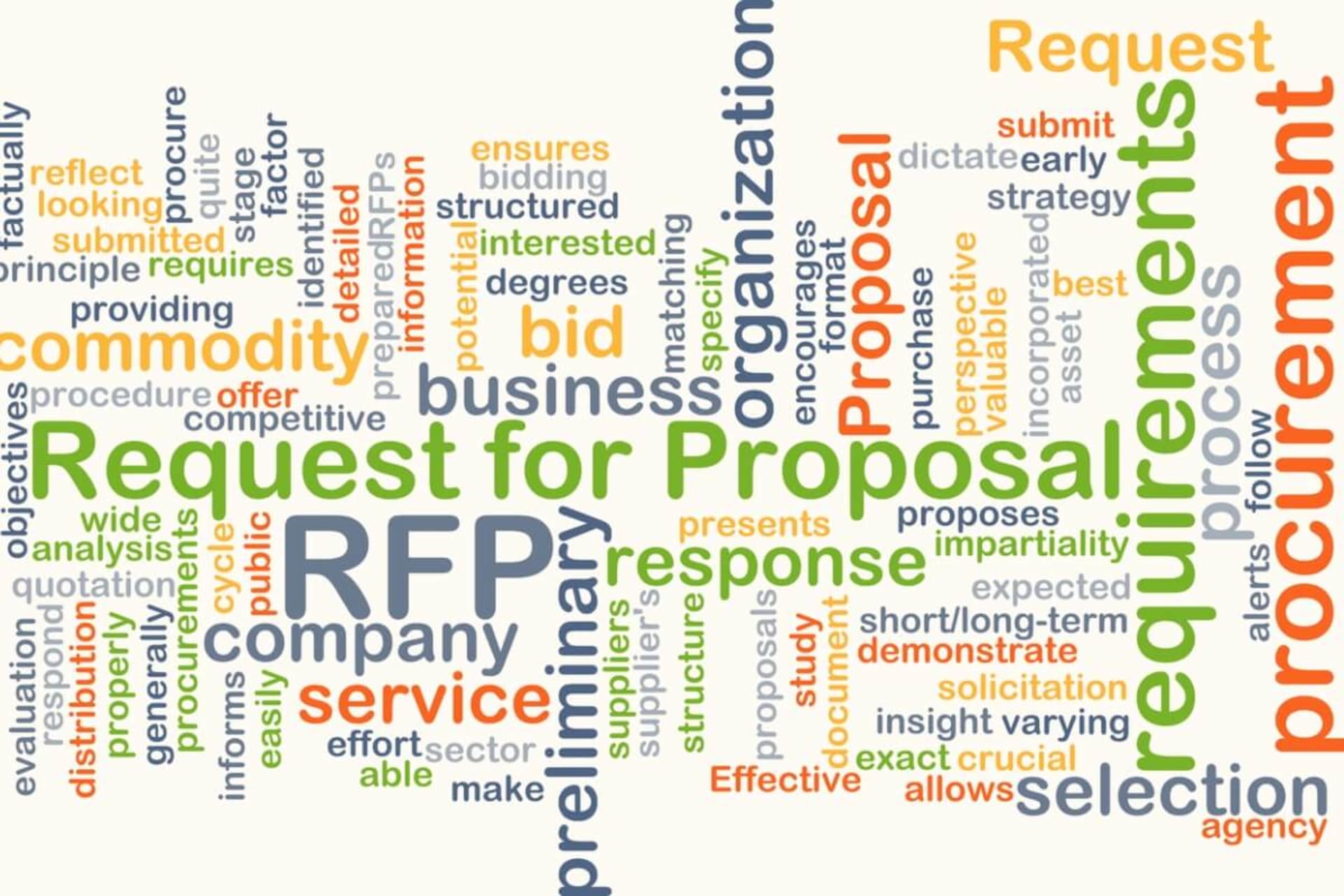A request for proposal (RFP) is an essential tool for companies that need to hire vendors to provide goods or services. Ideally, the request is met with quality proposals that give company leaders options for choosing the right provider for everything from raw materials to software engineering assistance. To get this result, RFPs must be complete and well crafted, which is not always easy to achieve.
In the sections below, we explore some best practices that can help you create the best RFPs. We cover the main components of an RFP and how to create a winning RFP. We also provide an RFP checklist to help you develop consistent, high-quality RFPs.
What Is an RFP?
An RFP is a document that companies write when they need a service and want to compare offerings. The request is sent out to vendors who could potentially provide the service, and those vendors respond by delivering proposals that detail their methods, costs, and expected results.
To get the best responses in return, an RFP must be written well and fully describe the company’s needs. RFP 360, a sourcing and procurement software provider, states, “When done correctly, the RFP process allows you to select the right vendor, ensure competitive pricing and reduce risk…. A good RFP is as concise as possible while offering helpful contextual information for vendors and asking the right questions.”
Main Components of an RFP
What is the typical structure of an RFP? While the sections can vary greatly depending on your industry, operations, and needs, the following topic areas are a good place to start. Once you create a standard RFP template, you can vary it for different types of projects.
- Summary. After you’ve created the RFP, summarize what readers can expect to find in the sections to follow and place this section at the beginning of the document. The summary should give vendors a good overview of the project.
- Introduction and background. Some of the vendors you send the RFP to may be familiar with your company, but others may not. This section provides context for the current project and helps readers understand your goals.
- Project goals and scope. Now that you’ve offered a high-level view of your company, you can delve into the details of the current project, how it fits into your broader objectives, and exactly what your needs are.
- Budget. This section is important because it helps vendors understand how much you expect to pay for their services. Some may self-select out of the process if their rates are much higher.
- Minimum requirements. In this section you’ll spell out any specific conditions that vendors must meet, including services, credentials, years of experience, and so on.
- Submission and evaluation process. Let vendors know exactly how to prepare their proposals. For some companies, this section can be highly specific, including the typeface and margin size used. Additionally, spell out how proposals will be evaluated, including the scoring method. This section should also include the timeline for submission and evaluation.
- Questions. Include specific questions that vendors must answer. They can be on any topic you choose, including what methods or tools they use, what happens if you need to change course during the project, or whether they provide a trial of their products or services.
How to Create a Winning RFP
A good RFP will invite good proposals, which will ultimately result in the highest-quality products and services for your needs. RFP 360 explains, “Good RFPs are highly-customized, clear, concise and thoughtful…. Poorly written RFPs result in low-quality proposals. Or, worse yet, too few proposals to make a confident decision.” Use the following guidelines to create good RFPs.
- Understand the problem. Companies send RFPs to get help in solving problems. So, before writing the RFP, be sure you fully understand the issue.
- Know what success looks like. The vendor you eventually hire will want to ensure they can provide a satisfactory solution. So, describe what that looks like to you.
- Provide the right amount of information. Provide enough to guide vendors in writing their proposals but not so much that you overwhelm them.
- Be transparent. If there are specific proposal elements likely to catch your attention, don’t make vendors guess what they are. Explain what’s most important to you.
The following video provides additional do’s and don’ts for creating a successful RFP.
RFP Process Checklist
Writing the RFP is just one part of the entire RFP process, which starts with identifying RFP requirements and continues with delivering the RFP, evaluating proposals, narrowing down and finalizing the selection, and completing a contract with your selected vendor. RFP best practices include consistency, so use the following checklist, or one that you create on your own, to ensure you follow the same steps each time.
- Work with stakeholders to fully understand the problem and the expected solution.
- Identify other details such as your budget, vendor requirements, and evaluation process.
- Create a list of project requirements.
- Write the RFP.
- Have stakeholders review the RFP and refine as needed.
- Find potential providers and send the RFP to these vendors.
- Receive proposals for a limited period and respond to questions from vendors.
- Perform an initial evaluation to ensure each proposal contains all requested documentation. Eliminate those that don’t.
- Perform a more detailed evaluation, using your stated process.
- Narrow the list to around five finalists and interview representatives or request demonstrations to help you make the final decision.
- Make the final decision, negotiate terms, and execute a contract.
- Notify vendors that were not selected and let them know you will consider them for future projects.
When Not to Use an RFP
A final word about how to achieve RFP success: only use RFPs at the right time. Consider using other request formats for projects that are less in-depth or when you actually require something else. These formats include request for information (RFI) or request for quotation (RFQ). Choose the right document to get the best response.






